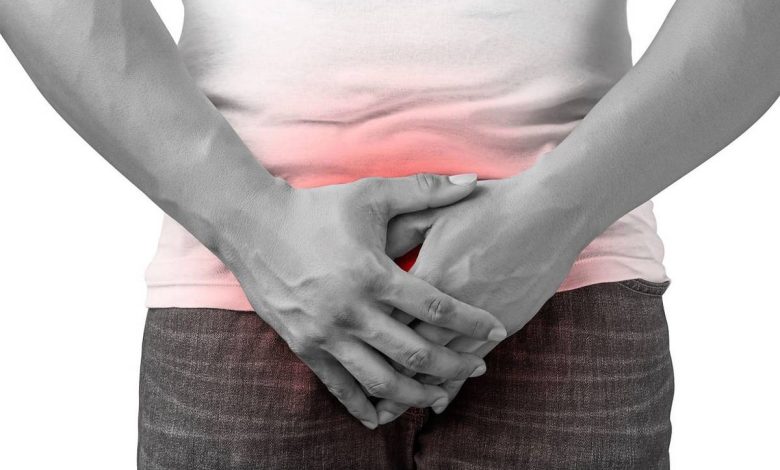Inguinal lymphadenitis, bump in the groin: what is this, causes, symptoms, diagnostics, treatment, prevention

Groin lump; Lump in the groin; Inguinal lymphadenopathy; Localized lymphadenopathy – groin; Bubo; Lymphadenopathy – groin
Lumps in the groin can be defined as any abnormal mass or swelling, occurring in the area between the abdomen and thigh. These lumps can vary in size and can be caused by a wide range of conditions..
Bump in the groin: what you need to know
A bump in the groin is a mass, located in the general area of the body, where the abdomen meets the thighs. it may vary in size, shape and consistency and may appear suddenly or gradually over time. It can be caused by a variety of conditions and diseases, some of which are benign, and some more serious.
Causes of cones in the groin
The causes of lumps in the groin are varied and can range from a benign cyst to a more serious underlying condition.. Common reasons include:
- Inguinal hernia: hernia occurs, when part of an organ or tissue protrudes through a weakened abdominal wall. Inguinal hernias occur specifically, when part of the intestine protrudes through the weakened abdominal wall.
- Cysts: Cysts are fluid-filled sacs, which can occur in any area of the body. A cyst in the groin area is often filled with oil, sweat or other bodily fluids.
- Hydrocele: this is a type of swelling of the scrotum, caused by the accumulation of fluid in the bag, which contains the testicles. It usually occurs in infants and young children., but can also occur in adults.
- Lipomas: Lipomas are the most common type of benign tumor. They are made up of adipose tissue and can occur anywhere., but are more often found in the groin area.
- Varicocele: it's swollen, curved veins in the scrotum, which are common in men of age 15-25 years.
- Epidemoid cysts: they are usually found on the skin in the groin and look like small hard bumps., who may blush and become inflamed.
- Lymphadenopathy: it is an abnormal enlargement of the lymph nodes, which can be a sign of a number of diseases, including infection, inflammation and leukemia.
- Tumors: Although rarely, tumors can occur in the groin area and can be benign or malignant.
Symptoms of bumps in the groin
Symptoms of bumps in the groin vary depending on the cause and can range from mild to severe.. Common symptoms include:
- Pain, swelling or soreness in the groin area
- Difficulty urinating
- Abnormal discharge from the genitals
- Difficulty emptying the intestines
- Visible bump in the groin area
- Pain or discomfort during sexual intercourse
When to contact a healthcare professional
If you experience any of the above symptoms or notice swelling in your groin area, contact your doctor or health care provider as soon as possible. Further examination may be required, to rule out or diagnose any underlying disease.
Questions, that your doctor may ask
During your visit, your doctor may ask a variety of questions., such as:
- What symptoms are you experiencing??
- How long have you had a tumor??
- Whether the seal is movable or hard to the touch?
- Does the tumor cause any pain??
- The tumor enlarges or shrinks over time?
- Do you have other symptoms?
- Are you sexually active??
- Are you currently taking any medications??
- Someone in your family has had a similar problem.?
Diagnosis of groin cones
The diagnosis of an inguinal bump is based on the patient's medical history, physical examination and test results. Tests, which can be used to diagnose the condition, include visualization tests, such as x-ray, computed tomography and MRI, as well as blood tests, lymph node biopsy and ultrasound.
Treatment of inguinal cones
Treatment of the inguinal bump depends on the underlying cause. If the lump is the result of a hernia, surgery may be required to repair the hernia. With tumors or cysts, surgery to remove the neoplasm may also be required.. In some cases, the lump can be treated with medication or antibiotics..
Home treatment of inguinal lymphadenitis
Home treatment options may be available depending on the cause of the inguinal bump.. Lifestyle changes, such as the rejection of certain products, smoking cessation and regular exercise, may help reduce symptoms and improve overall health. Medicines, otpuskaemыe without prescription, such as ibuprofen and acetaminophen, can relieve pain and reduce swelling.
Prevention of groin cones
In most cases, it is impossible to completely prevent the formation of an inguinal cone.; however there are some steps, you can take, to reduce the risk. These include maintaining a healthy weight., avoiding tension during training and wearing protective equipment when practicing contact sports. It is also important to attend regular medical check-ups and screenings., To make sure, what
Used sources and literature
McGee S. Peripheral lymphadenopathy. In: McGee S, ed. Evidence-Based Physical Diagnosis. 5th ed. Philadelphia, PA: Elsevier; 2022:chap 27.
Poulose BK, Carbonell AM, Rosen MJ. Hernias. In: Townsend CM, Beauchamp RD, Evers BM, Mattox KL, eds. Sabiston Textbook of Surgery. 21st ed. Elsevier; 2022:chap 45.
Winter JN. Approach to the patient with lymphadenopathy and splenomegaly. In: Goldman L, Schafer AI, eds. Goldman-Cecil Medicine. 26th ed. Philadelphia, PA: Elsevier; 2020:chap 159.
